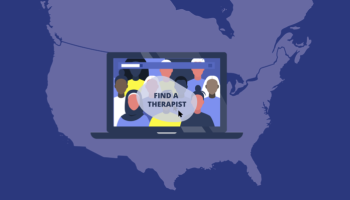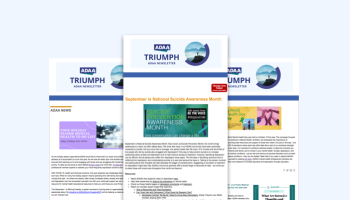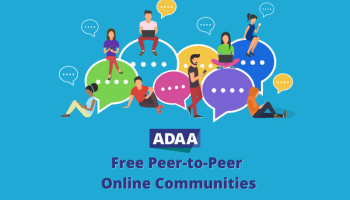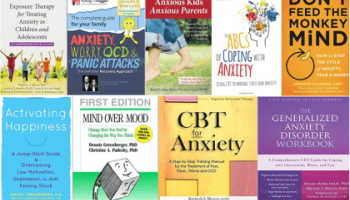10 Strategies to Help Kids Manage Uncomfortable Emotions
10 Strategies to Help Kids Manage Uncomfortable Emotions
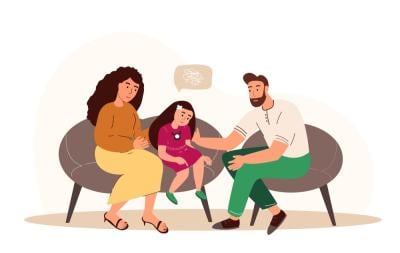
Dealing with uncertainty and difficult emotions is part of life. Learning how to accept and manage both is important for a child’s growth and development. In a world that values immediate gratification and ease, it can be challenging to teach kids how to tolerate these feelings without intentional practice.
Rogers Behavioral Health’s Dr. Amanda Heins explains the importance of guiding kids to view uncertainty and uncomfortable emotions as an opportunity to build grit and strengthen their problem-solving skills rather than something to avoid.
Why are kids more uncomfortable with managing difficult emotions these days?
Environmental factors. While genetics certainly can play a role, a child’s environment plays a powerful part, too. Kids oftentimes experience less desirable emotions, like worry and stress, when it comes to school and social situations. When kids are less confident about how to manage emotions, their initial reaction can be, “I don't like this feeling, and I just want it to go away.” This can lead to kids avoiding the task or situation that’s causing the discomfort, like studying for a quiz or asking a friend to hangout. Instead, they’ll engage in something that they enjoy, like screentime.
Parental factors. Well-meaning parents can unintentionally reinforce avoidance. For example, if a child no longer wants to participate in an activity that they’re involved in, a parent may say it’s okay and allow them to stop without talking about it first. While it’s possible the child is making a responsible decision to simplify sports and activities, it’s important for parents to explore the reasons why and ensure it’s best for the child’s short- and long-term development, rather than being influenced by their own discomfort. Missing this step can reinforce kids to “lean out” of discomfort.
Technology factors. Kids are on devices now more than ever, and for many, screens have been a large part of their childhood. Without proper screentime monitoring and limits, technology can take away valuable face-to-face socialization practice and provide a way to avoid discomfort. Technology also offers immediate gratification and relief. For example, a child doesn’t have to think about their math test while playing Fortniteâ. Kids learn that when they feel overwhelmed, they can escape to their phone or tablet without feeling or working through what’s causing them to feel uncomfortable.
While kids may experience temporary relief, the source of the discomfort hasn’t magically disappeared. When the child remembers the upcoming task or situation they’re avoiding, they’ll be less prepared in how to manage it, which leads to heightened distress and the urge to avoid again. Additionally, as children enter teenage years and beyond, expectations to manage discomfort naturally increase as does the risk of avoidance.
When should a child’s avoidance raise concern?
Parents and caregivers should be concerned if they notice:
- Difficulty in completing daily tasks. A child should be able to get to school on time. Parents or caregivers should not have to sigh in relief each morning, thinking, “Thank goodness we made it through another morning.”
- Decrease in socialization. A child has become more withdrawn at school or frequently says that they no longer want to hang out with friends/peers anymore.
- Increase in screen use.
- No longer engaging in activities/hobbies they used to enjoy.
- Neglect of basic self-care, like eating, showering, and getting adequate rest.
- Significant shift in affect. For example, the child was typically a smiley, joking kiddo and is now tearful most days.
- School refusal.
- Self-harm.
- Drug or alcohol use.
- Hopelessness or wishing no longer to be alive.
10 strategies for helping children manage discomfort
I recommend 10 strategies for parents and caregivers to support kids’ tolerance of discomfort:
- Make it a family goal. The power of TEAM is not lost and it’s likely everyone could benefit from practicing healthier ways to manage discomfort. Encourage each family member to set a goal.
- Establish screentime limits and monitor content. While I’m not advocating for eliminating technology, I’m a firm believer in balance. Too much of anything is usually not healthy. Instead, create reasonable expectations around technology use.
- Get kids involved in something outside of the home. Identify in-person activities your child is interested in and get involved. Whether it’s sports, musical instruments, or other clubs, these activities provide natural opportunities to build confidence and work through discomfort, oftentimes without even realizing that’s what is happening. Benefits include, but are not limited to, building trust, teamwork, receiving and applying feedback, encouraging others, problem-solving, managing emotions, flexibility, communication, and much more! Most importantly, these activities provide opportunities to meet peers with similar interests and form new friendships!
- Practice, practice, practice. While the Milwaukee Bucks’ Giannis Antetokounmpo has natural talent, even he needs to practice regularly to improve his game. A child is no different. The more kids practice leaning into discomfort, the more confident they’ll feel. Whether it’s navigating a basketball game loss or struggling to learn a new musical note on the violin, each provides powerful confidence-building learning opportunities in how to manage less desirable feelings, like frustration, disappointment, and anxiety. Plus, they’ll learn how to make adjustments before the next basketball game or violin performance.
- Maximize natural learning moments. While there’s plenty of lessons learned from team-based activities, it doesn’t hurt for parents to “stack the deck” a bit and highlight a couple of them. Helping your child understand how much courage it took to try something new, stick with it, and improve while also having fun can be the final touch that’s needed to reinforce the learning moment. This opens doorways to extend the learning in future life situations. For example, if a child plays basketball or hockey and they’re feeling discomfort and the urge to avoid a new situation outside of that sport, you can ask, “How would you deal with that on the court or the ice?”
- Model what we preach. Model healthy ways to manage tough emotions. We need to remember that one of the main ways kids learn is through observation. How do adults around them cope with discomfort? No one is ever going to be perfect, but if we show them healthy ways to feel and work through it, kids will think, “If my parent/loved one can handle discomfort, then maybe I can, too.”
- More curiosity and validation, less unsolicited advice. One of my children started his first year in middle school. While starting middle school can be anxiety-provoking for kids, it’s important to not assume that’s what your child is experiencing. Try asking something like, “Wow, you already are a week into middle school!! What do you like about it so far? Did anything unexpected come up today?” If something did, follow up with “How did you navigate that?” This gives the opportunity to check in with your child, assess their confidence level managing the situation, and provide praise and feedback. Most adults will ask their child, “How was your day at school?” and are typically met with a one-to-two-word response. Instead ask questions like, “What’s the latest in Math class?” “Who do you sit with at lunch?” What did you do during recess?” Open-ended questions usually provides more information.
- Embrace learning moments. Try not to panic in front of your child if you see them feeling uncomfortable. As parents, we can be quick to fix things and while well intended, we actually could be taking a powerful learning moment away from them. While it’s difficult to see your child struggling, try to resist the urge to immediately take the discomfort away. Instead, share your observations with them, acknowledge what your child is feeling, and together figure out what support they need from you to work through it. Remember, if we always fix things for our kids, they will miss opportunities to grow grit or resilience.
- Help them develop a growth mindset. There is power in the word “and.” Something can cause discomfort and we can keep working at it and benefit from it. Using “and” in conversations about challenging circumstances helps kids to develop more balanced thinking and enables them to talk back to anxious or negative thoughts.
- Keep the door of communication open. While this seems obvious, even if a child appears to be handling discomfort well, it’s important to let them know that if there's ever a moment where they’re feeling overwhelmed or stuck they can come to you to solve the problem together.
The more we help kids embrace learning moments and all the “feels” that can come with them, the more prepared they’ll be able to confidently navigate whatever life throws their way.
Rogers offers children's mental health services
Rogers offers compassionate care for children, teens, and adults, including inpatient and residential in Wisconsin, and PHP/IOP across the country. Call 800-767-4411 for a free, confidential screening.
This blog was written by Rogers Behavioral Health, an ADAA partner.












